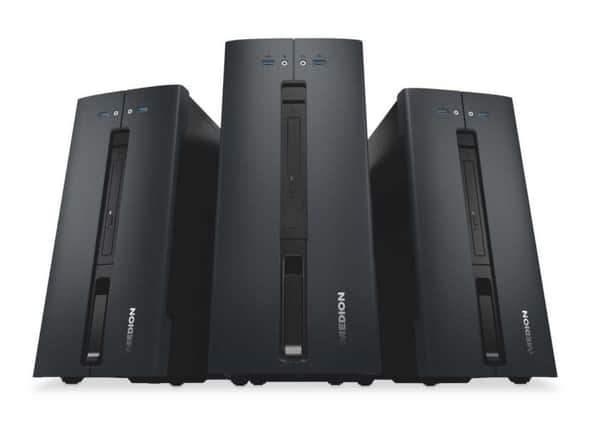What made Aldi’s PC pack more of a punch than the rest?


Today’s focus on laptops and phones has pushed desktop PCs back into a niche, as office tools rather than additions for the home, but many of us still use them and will, from time to time, need to upgrade them.
The appearance the other week of a great hulk of a computer at Aldi was an acknowledgement that this trend continues. It may indeed signal a partial return to the days of PCs as trolley fillers.
Advertisement
Hide AdAdvertisement
Hide AdAldi used to specialise in selling highly specified machines by the German manufacturer Medion, at what seemed like spectacularly low prices, which would be gone as quickly as they had appeared. Its latest offering upped the ante still further on the specification, though at around £480 it was hardly an impulse buy.
Aldi positioned it as a productivity tool for home workers who needed an industrial-grade workhorse, but it was almost equally suitable for those who just wanted to play games or run the latest software.
It differed from earlier Medion models by including a portable solid state hard drive as well as an inbuilt mechanical one, but its principal innovation was the use of a Ryzen processor from the American manufacturer AMD, chief rival to the market leader, Intel. AMD processors have been credible alternatives to Intel’s Pentium, Celeron and Core ranges for years now, and computers that use them can be cheaper by £200 or more. The Ryzen chips are at the top of its range and build on its established tradition of incorporating graphics cards into the main processing unit.
Integrated graphics in desktop PCs have gained a bad name. The term usually means that a separate graphics card has not been installed, leaving the machine reliant on the basic graphic functions built into its processor. That means it will be capable of displaying a picture on the screen but not of moving it around fast enough to satisfy the needs of games or other high-level software.
Advertisement
Hide AdAdvertisement
Hide AdBut in the case of AMD’s Ryzen range, the graphics functionality accounts for more than 40 per cent of the total processing power, and is on a par with the separate, market-leading Radeon graphics cards that the company also makes.
All of which means that in computers like the new Medion – which, by the way, Aldi has already sold out of – you’re getting a very decently specified processor and graphics card for less than the cost of an equivalent Intel processor alone.
This doesn’t mean that buying a PC is necessarily less of a minefield than it has ever been, since there are fast and much slower chips from both manufacturers with confusingly similar names. Even within the Ryzen line-up, there is a significant difference in performance from bottom to top, with the Medion somewhere in between. But at least the savings between Intel and AMD are relatively consistent, right across the range.
So whether you’re buying from Aldi or a specialist that doesn’t also deal in frozen peas, the rule of thumb that the more you pay, the more you get, still holds true. However, if what you’re getting has a Ryzen label on the box, you can at least be confident that you will get what you’ve paid for, and perhaps a bit extra.